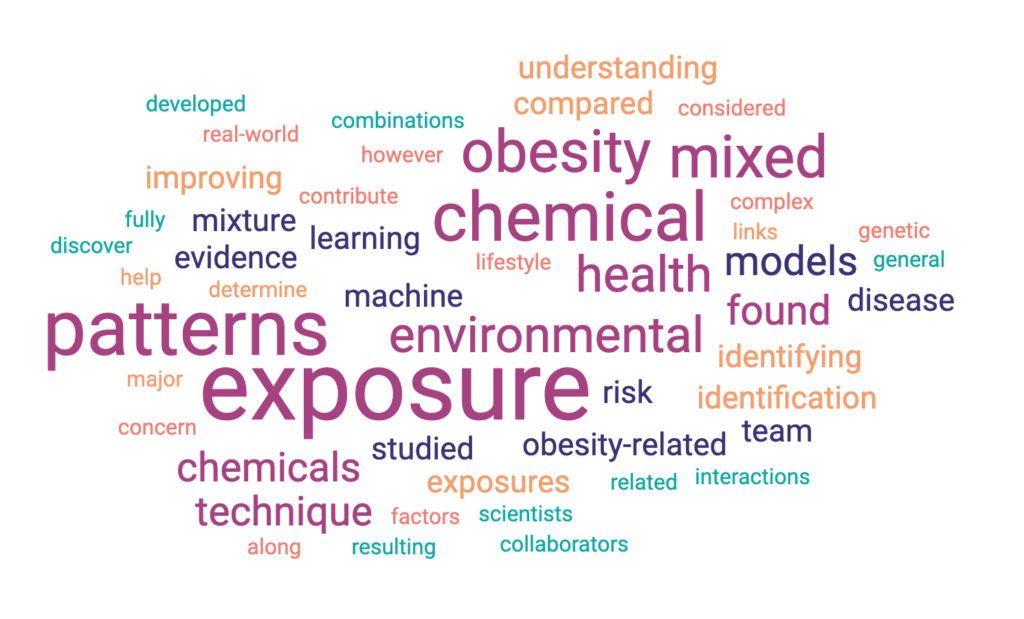Obesity is a major health concern and chemical exposure is considered to contribute to this disease, along with genetic and lifestyle factors. However, real-world chemical exposure is complex and combinations of chemicals and their resulting interactions have not been studied fully.
Scientists at Berkeley Lab and their collaborators developed a machine learning technique to discover obesity-related mixed chemical exposure patterns associated with environmental health risk in the general U.S. population. Using this technique, the researchers assessed the relationships between the specific chemical mixture patterns and obesity indicators, such as body mass index and waist circumference. They used the National Health and Nutrition Examination Survey 2005–2012 data available from the Centers for Disease Control.
Hang Chang, a research scientist in the Biological and Systems Engineering (BSE) Division, co-led the team that found and demonstrated that mixed exposure patterns exceed the environmental risk of exposure to individual chemicals. “We studied these exposure patterns from organic chemicals that could disrupt hormones previously thought to be involved in obesity and found evidence that they could be associated with the disease. At the same time, we looked at carcinogens and didn’t find any correlation between their presence and obesity.”

The team also conducted a comprehensive evaluation of their algorithm by comparing it to existing models. “We found that our technique provides consistent and robust discoveries compared with classical models. Compared to those models, our method is better at identifying patterns of mixed exposures and improving the identification and understanding of these mixed exposure patterns on health,” said Chang.
“Our work emphasizes the importance of identifying mixed exposure patterns and adds more evidence to the association between environmental chemical exposures and obesity,” Chang said. “This model could open a new avenue for assessing health effects of environmental mixture contaminants.”
Other Berkeley Lab authors include: Kuldeep Chawla from the Information Technology Division and Bo Hang, Jian-Hua Mao, and Antoine M. Snijders from the BSE Division.
At Berkeley Lab, this work was supported by the National Institutes of Health.




